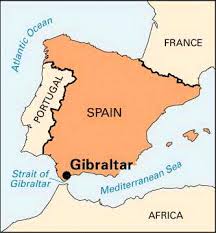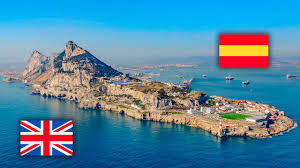 Gibraltar has been in in the news lately. As a British colony or protectorate, “The Rock” has been “in limbo” since the citizens of the United Kingdom (UK) voted to leave the European Union (EU) in 2016, and finally did so on 1 January four years later.
Gibraltar has been in in the news lately. As a British colony or protectorate, “The Rock” has been “in limbo” since the citizens of the United Kingdom (UK) voted to leave the European Union (EU) in 2016, and finally did so on 1 January four years later.
A Problem Resolved?
 This meant that Spain had a border with a non-EU country for the first time since it joined the then European Economic Community (EEC) in 1986. The other states with borders to Spain, namely Portugal, France, and Andorra, are all still EU member states.
This meant that Spain had a border with a non-EU country for the first time since it joined the then European Economic Community (EEC) in 1986. The other states with borders to Spain, namely Portugal, France, and Andorra, are all still EU member states.
Talks have been taking place between the relevant politicians in Gibraltar, the UK, Spain and in Brussels in an attempt to come up with an agreement so that Gibraltar, La Línea and San Roque (both Spain) and the whole of the Campo de Gibraltar region benefit from closer collaboration.
 On 12 April after a meeting of all parties, including Gibraltar’s first minister Fabian Picardo, the executive vice-president of the EU and the foreign secretaries of the UK and Spain, agreement on a way forward was reached.
On 12 April after a meeting of all parties, including Gibraltar’s first minister Fabian Picardo, the executive vice-president of the EU and the foreign secretaries of the UK and Spain, agreement on a way forward was reached.
According to the joint communiqué released, all that remains is to spell out in black and white the agreement which affects the airport, movement of goods and mobility of people.
“The devil is in the detail”, as they say in English. The future prosperity of the whole region is at stake.
© The History Man
Acknowledgements:
Pedro Garcia Vazquez (7TV)
Publicaciones del Sur
Ronda Semanal
Photos:
Britannica
Europa Sur
YouTube
Tags:
7TV, airport, Andorra, Brussels, Campo de Gibraltar, EEC, EU, European Economic Community, European Union, Fabian Picardo, first minister of Gibraltar, France, Gibraltar, History Man, mobility of people, movement of goods, Paul Whitelock, Pedro Garcia Vazquez, Portugal, Publicaciones del Sur, Ronda Semanal, San Roque, Spain, “The Rock”, UK, United Kingdom